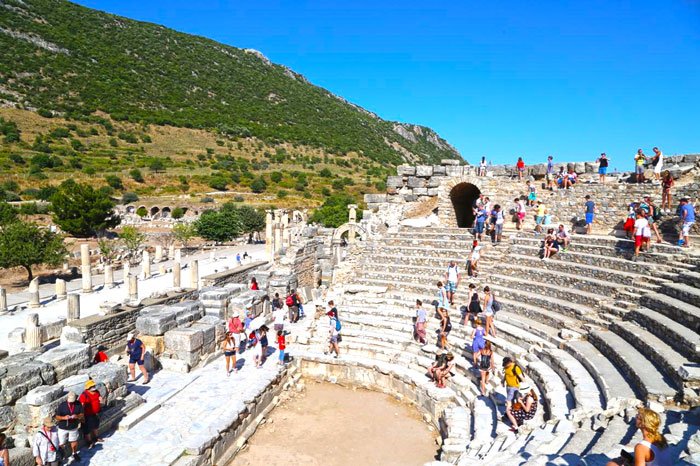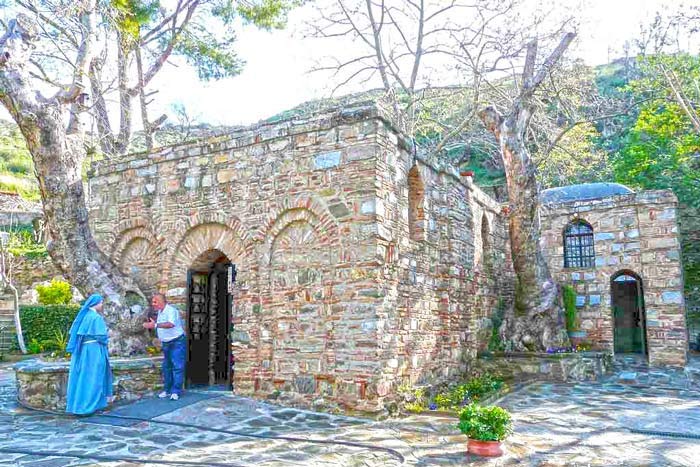Private tour Ephesus – The Shrine to the Goddess Artemis
Private tour Ephesus – The first shrine to the Goddess Artemis was probably built around 800 B.C. on a marshy strip near the river at Ephesus. The Ephesus goddess Artemis, sometimes called Diana, is not quite the same figure as was worshiped in Greece. The Greek Artemis was the goddess of the hunt. The Ephesus Artemis was a goddess of fertility and was often pictured as draped with eggs or multiple breasts, symbols of fertility, from her waist to her shoulders.
That earliest temple contained a sacred stone, probably a meteorite that had “fallen from Jupiter”. The shrine was destroyed and rebuilt several times over the next few hundred years. By 600 B.C.; the city of Ephesus had become a major port of trade and an architect named Chersiphron was engaged to build a new, larger temple. He designed it with high stone columns. Concerned that carts carrying the columns might be mired in the swampy ground around the site, Chersiphron laid the columns on their sides and had them rolled to where they would be erected.
King Croesus of Lydia
This temple did not last long. According to one story in 550 B.C.; King Croesus of Lydia conquered Ephesus and the other Greek cities of Asia Minor and during the fighting, the temple was destroyed. An archeological examination of the site, however; suggests that a major flood hit the temple site at about the same time and may have been the actual cause of the destruction. In either case; the victorious Croesus proved himself a gracious new ruler by contributing generously to the building of a replacement temple.
This next temple dwarfed those that had come before it. The architect is thought to be a man named Theodorus. Theodorus’s temple was 300 feet in length and 150 feet wide with an area four times the size of the previous temple. More than one hundred stone columns supported a massive roof. One unusual feature of the temple was that a number of columns had bases that were carved with figures in relief.




